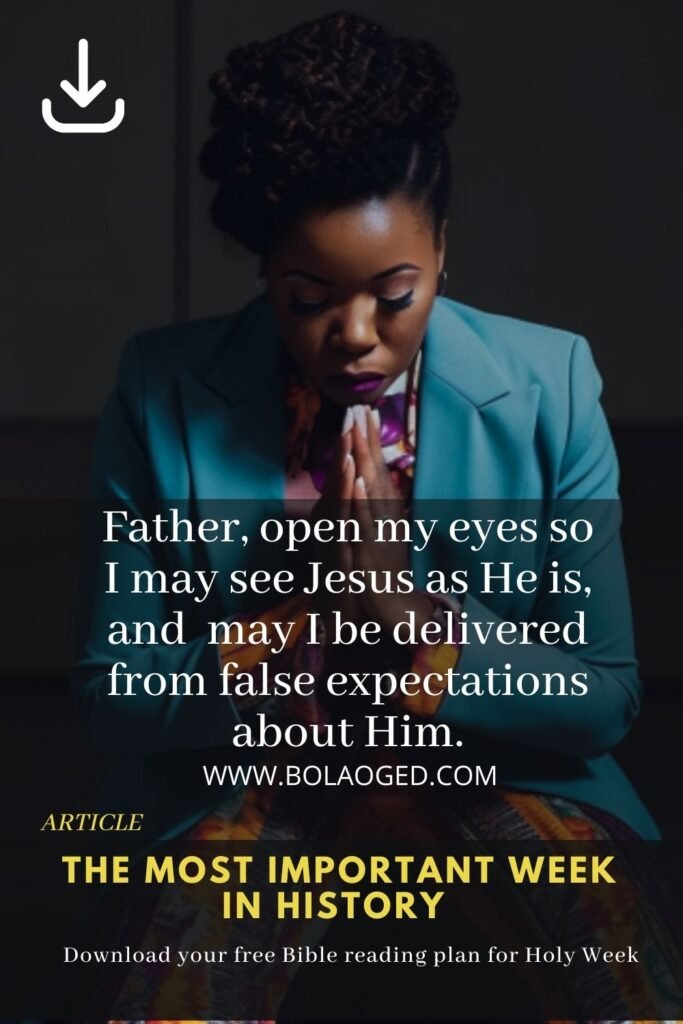This is the most important week in history Jesus makes a triumphant entry into Jerusalem. When we look at the different gospel accounts we realise that he had previously arrived at Bethany and the crowd had been flocking to see Him because of Lazarus whom He had raised from The Dead.
The Pharisees were extremely jealous and wanted to even kill Lazarus because many people believed in Jesus because of him. When Jesus made His way to Jerusalem, many people followed Him into Jerusalem and large numbers came out of the city to meet Him. This was after He had sent His disciples to go and recover a donkey and to tell whoever questions them that the master needed it. It was duly done.
They put their clothes on the donkey as a form of saddle and sat Jesus on it. The people who accompanied them spread their clothes on the ground so that Jesus’ donkey could walk over it. This was in effect a red carpet treatment. They were welcoming Him as their King. And as they cried out Hosannah, which means ‘Save us’, they were expressing their hope that He would help them throw off the yoke of the Romans. However, this was not to be because Jesus’s mission was not political peace but spiritual peace.

Jesus went everywhere on foot, but this time He chose to ride a donkey. The donkey was a symbol of peaceful kingship as had been prophesied by Zachariah the prophet. Zechariah had prophesied that the king would come riding on a donkey. Matthew in his gospel refers directly to this prophecy and this event as a fulfillment of the prophecy.
“Go into the village ahead of you. At once you will find a donkey tied there, and a colt with her. Untie them and bring them to Me. If anyone says anything to you, you should say that the Lord needs them, and immediately he will send them.” This took place so that what was spoken through the prophet might be fulfilled: Tell Daughter Zion, “Look, your King is coming to you, gentle, and mounted on a donkey, even on a colt, the foal of a beast of burden.” The disciples went and did just as Jesus directed them. Matthew 21:2-6 HCSB
This is the passage Matthew quotes from. The interesting thing is that the disciples, according to John’s account, did not understand all that was going on, but they later did.
Rejoice greatly, Daughter Zion! Shout in triumph, Daughter Jerusalem! Look, your King is coming to you; He is righteous and victorious,[a] humble and riding on a donkey, on a colt, the foal of a donkey. Zechariah 9.9 HCSB
When a king came riding on a donkey it meant that he came for peace. No doubt they felt that He would bring peace to the nation and rid them of the Romans but what he brought was peace to their hearts. They waved palm branches which also symbolised victory because they believed that He had come to give them victory.
They called Him ‘son of David’ which is the title of the Messiah. They shouted hosanna, they were calling to Him to save them, and they declared ‘blessed is he who comes in the name of the Lord’. They were in effect quoting the words of Psalm 118, which is one of the praise Psalms used during the Passover. These people then were expecting Jesus to bring them salvation, to bring them victory, to bring them peace, and all of that He did but not in the way that they expected.
in another post, I’m going to cover the five major lessons that we can learn theologically but also in terms of our relationship with God from what happened on that day when our Lord rode triumphantly into Jerusalem.
Please find enclosed a bible study guide for the entire week which covers a significant portion of what is written in the Bible about Jesus. Note that there are variants in the chronology of that week. Some people believe that He went into the city on a Monday but the traditional understanding of the Church has always been that he entered the city on the day that we call Palm Sunday, that he was crucified on Friday and rose on Sunday. So if you see a slightly divergent reading plan, fear not.
